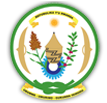Project Background
SECONDARY CITIES
The EDPRS2 (2013-18) emphasizes the significance of good development management. The strategy formulation process also resulted in the creation of the Urbanization and Rural Settlement Sector, with strategic goals and objectives for a sustainable, well-managed and integrated growth.
The priority component of the EDPRS2, economic transformation, emphasises the following three priority objectives in the Urbanization and Rural Settlement sector:
- Integrated development planning and management;
- Development of secondary cities as poles of growth;
- Establishment of financing and supply options for affordable housing.
The Strategic Plan for the Urbanization and Rural Settlement Sector (2013-2018) (SSP) outlines the overarching goals and objectives of urban development with the aim to improve Rwandans’ quality of life and develops the objectives of good development management and of spatial distribution of growth.
It translates them into two high level priorities:
- To develop the basis for good urban and rural settlement management cross-cutting all development sectors and following clear guidelines and procedures at all levels of governance;
- To create a hierarchical network of urban and urbanizing centers providing services and attracting economic activities countrywide, and to support the development of secondary cities, districts, towns and villages, as well as the capital Kigali.
With the EDPRS2 and the Urbanisation and Rural Settlement SSP, six secondary cities were selected for the promotion of urban development outside of the capital city: Rubavu, Musanze, Huye, Rusizi, Nyagatare, and Muhanga. The secondary cities were identified not only to transform the economic geography of the country, but also to avoid pressure on peri-urban land of the Capital city Kigali and urban sprawl, including sprawl of urban functions into rural areas and provide socio-economic opportunities.
The decentralisation of development management, with a new supportive legal framework laying out the principles and procedures, was identified as a necessary component for the good management of urbanisation.
Similarly, the official approval of One Stop Centers responsible for the management of development at District level is a complementing effort toward an improved development management, including the coping with urbanisation.
The administrative structure now distinguishes between urban and rural Districts. With the operationalization of One Stop Centres in all 30 districts from 2014, and introduction of GIS- and web-based planning and construction permitting, efficiency and transparency in urban development management is continuously being increased.
Rwanda Urban Development Program (RUDP)
On request of the MINECOFIN, The World Bank with the ministry of infrastructure has prepared a Country Support Program for Urban Development Rwanda, to be implemented over 4 years (2016-2020). The pre-agreed amount of the support program is 95 Mio USD. Finances are specifically for implementation of prioritized infrastructure investment projects in COK and the secondary cities based on detailed feasibility studies, paired with economic development support and capacity building measures.The key components include:
-Provision of basic infrastructure in Secondary Cities (80 Mio USD);
-Pilot upgrading in one Kigali settlement, Agatare (10 Mio USD);
- Technical assistance to support sustainable urban management and capacities at Secondary Cities District level and facilitation of Local Economic Development (3 Mio USD);
- Support project management at national level through MININFRA and LODA (2 Mio USD).
................................................................................................

 ENGL
ENGL KINY
KINY